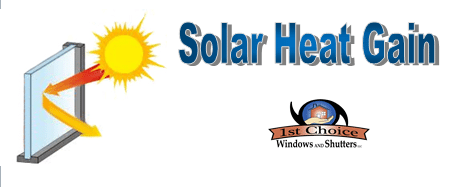In Zone 1, the requirements for SHGC are .25 and lower. The U-Value has two different options. If the glass is also Hurricane Protection or Laminated Glass, the U-Value has to be .75 or lower. If the glass is standard non impact, the U-Value will need to be .65 or lower.
In Zone 2, the requirements for SHGC is also .25 and lower. The U-Value still has two different options. If the glass is also Hurricane Protection or Laminated Glass, the U-Value has to be .65 or lower. If the glass is standard non impact, the U-Value will need to be .50 or lower.
When your replacing older inefficient windows and doors, the Prescriptive method must be used. This is as simple as choosing a product that meets or exceeds the minimum values for your zone and glass type as listed above. If your building a new structure, there is a little more wiggle room in the way the values are calculated. The Performance method is having an energy expert calculate the entire structure and it’s systems to come up with an average for the entire structure and meet or exceed the values set by the New Energy Code.
Manufactures provide a label indicating Energy Performance to review. Some manufactures also will etch these figures in the corner of the glass somewhere. If you don’t have the label and there is no etching, most likely your windows are out of date and will need replacing.
We hope this helps explain the New Florida Energy Code and feel free to call us at 239-325-3400 for more information or questions. Our friendly and knowledgeable staff is here to help educate you.







